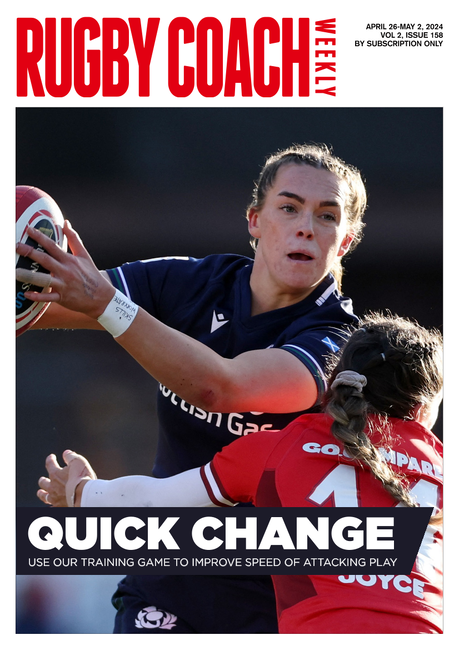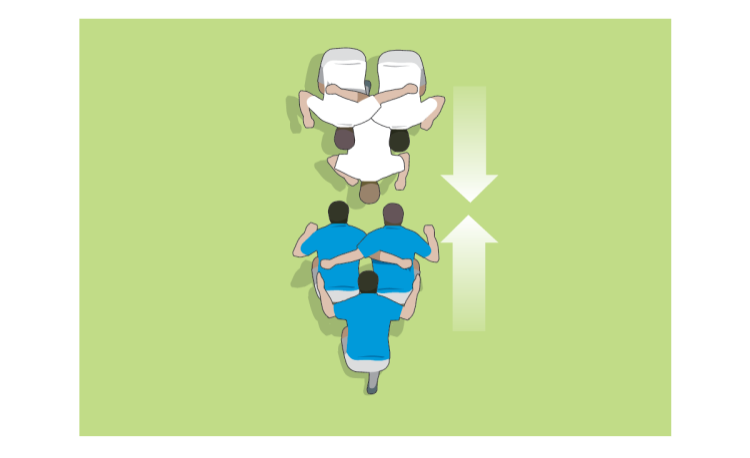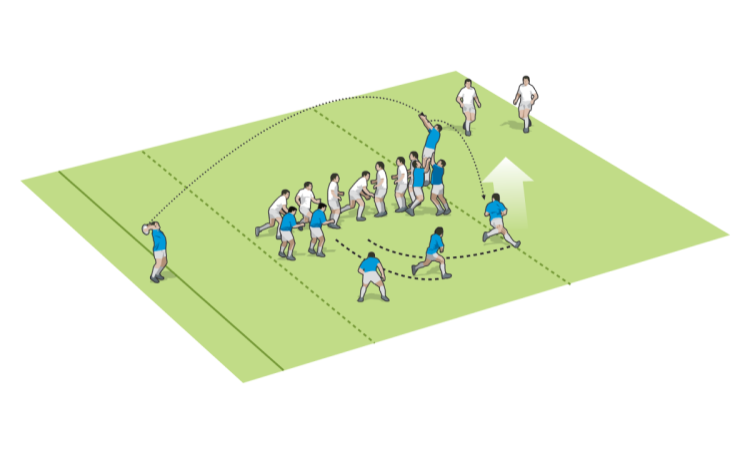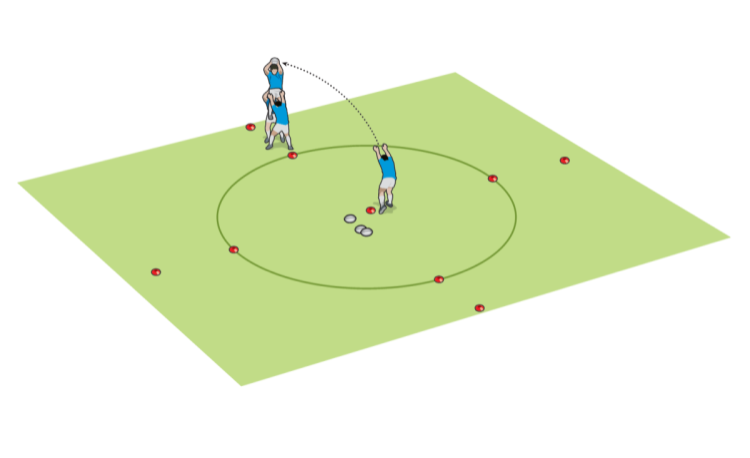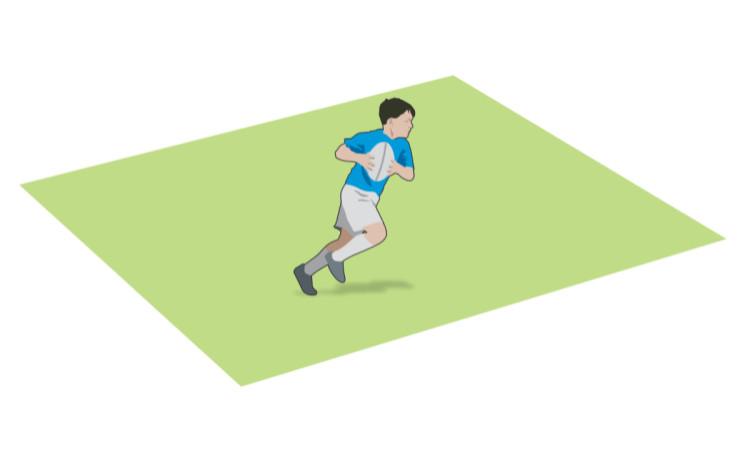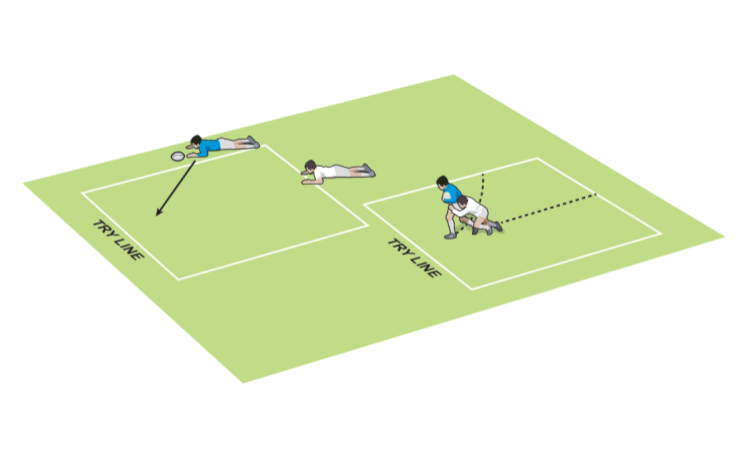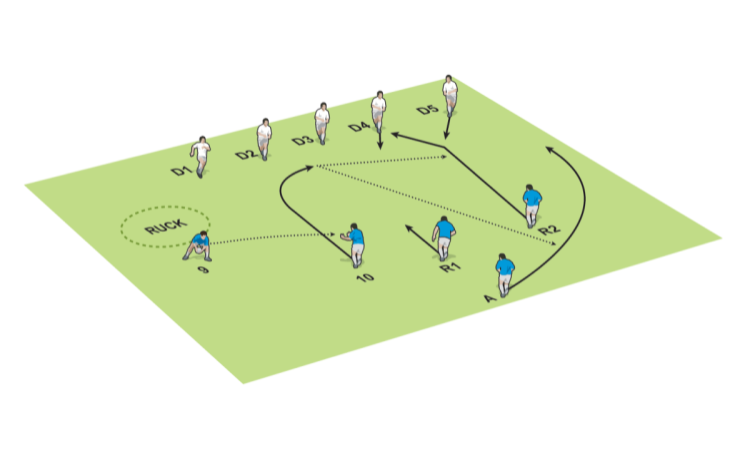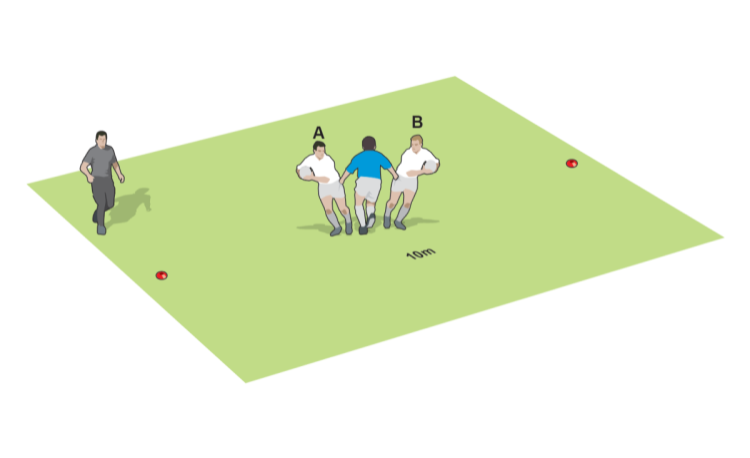You are viewing
1 of your 2 free articles
Prevent the “catch and drive”
Scrums & Lineoutsby Dan Cottrell
The defence is free to use any ploy here as they try to stop the lineout drive before it has a chance to get going. But make sure they sometimes “stand off” to unnerve the attacking side.
A defender can’t be offside at the lineout if he’s tackling the ball carrier, even if the ball hasn’t left the lineout – see law 19.14(c). As long as the maul hasn’t formed, this is legal. Practise the decision-making options in this activity.
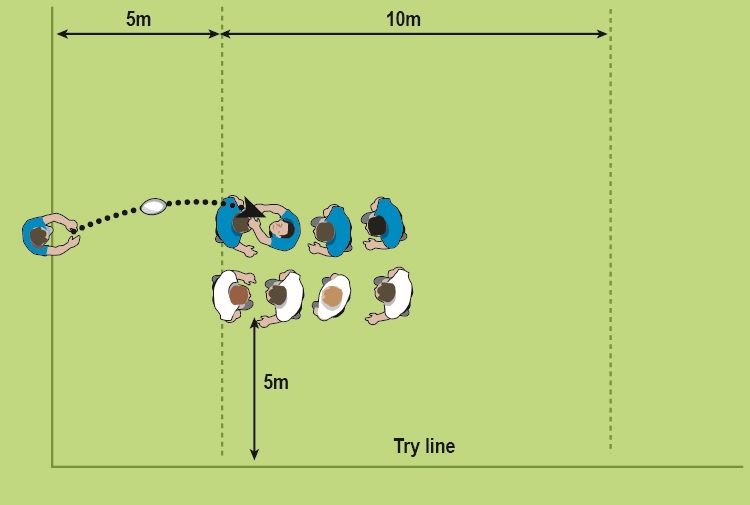
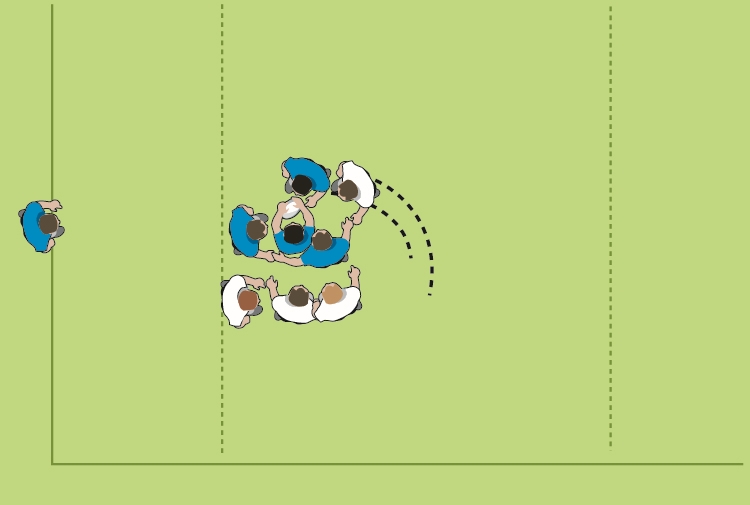

A defender can’t be offside at the lineout if he’s tackling the ball carrier, even if the ball hasn’t left the lineout – see law 19.14(c). As long as the maul hasn’t formed, this is legal. Practise the decision-making options in this activity.

- Get a hooker to throw into a 4 v 4 lineout, set up 5m from the try line.
- The defending team has the option to compete at any stage, and that can mean jumping for the ball.
- The attacking side aims to drive the ball over the try line.
- When the catcher is on the ground, the defending team has various options. They can try to:
- Use a simple drive.
- Sack the catcher as he lands.

- Stand off and send a player around to tackle the ball carrier at the back

- Stand off and force a penalty for obstruction if the attack transfers the ball back from the front man in anticipation of a maul. Once you now engage with the attack, they should be penalised
- If you have more forwards available, then add to both teams.
- Referee it tough or get one of the injured or spare players to referee it.
TECHNIQUE
- Decide on your defensive strategy early
- Time your intervention
Newsletter Sign Up
Coaches Testimonials

Gerald Kearney, Downtown Las Vegas Soccer Club

Paul Butler, Florida, USA

Rick Shields, Springboro, USA

Tony Green, Pierrefonds Titans, Quebec, Canada
Subscribe Today
Be a more effective, more successful rugby coach
In a recent survey 89% of subscribers said Rugby Coach Weekly makes them more confident, 91% said Rugby Coach Weekly makes them a more effective coach and 93% said Rugby Coach Weekly makes them more inspired.
Get Weekly Inspiration
All the latest techniques and approaches
Rugby Coach Weekly offers proven and easy to use rugby drills, coaching sessions, practice plans, small-sided games, warm-ups, training tips and advice.
We've been at the cutting edge of rugby coaching since we launched in 2005, creating resources for the grassroots youth coach, following best practice from around the world and insights from the professional game.
More from us
© 2023 Rugby Coach Weekly
Part of Green Star Media Ltd. Company number: 3008779
We use cookies so we can provide you with the best online experience. By continuing to browse this site you are agreeing to our use of cookies. Click on the banner to find out more.


